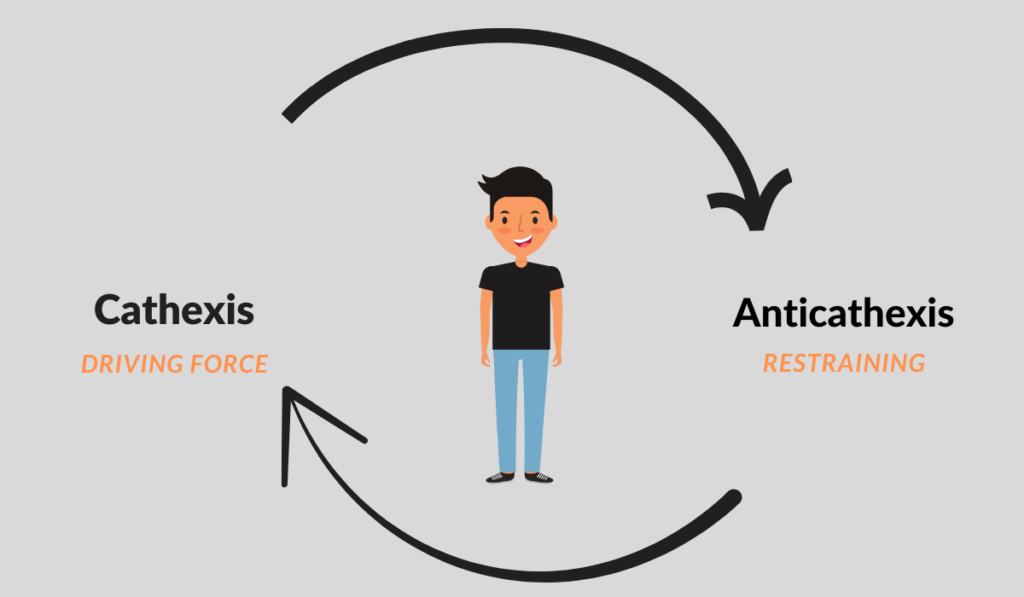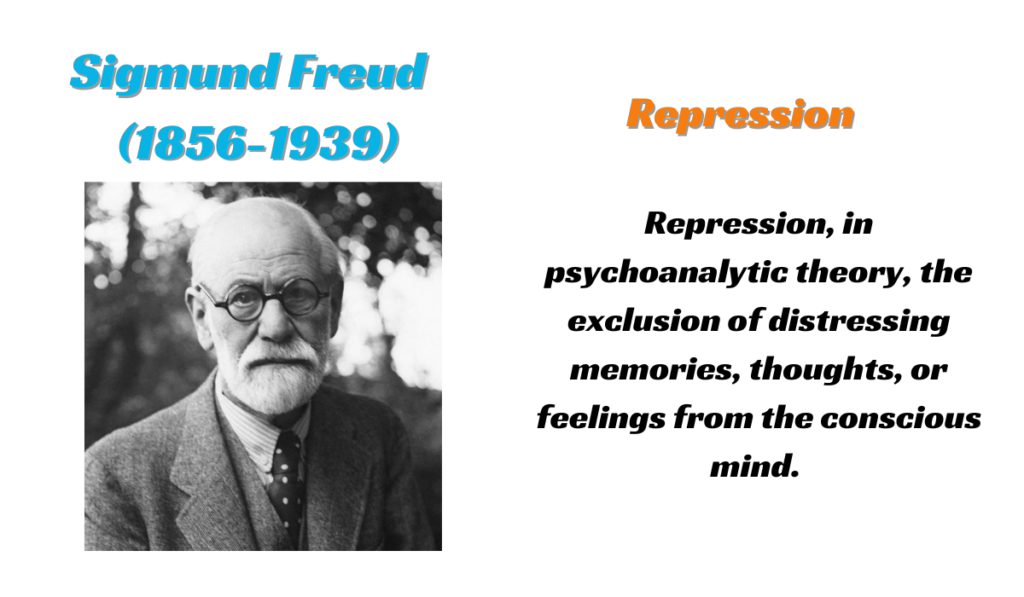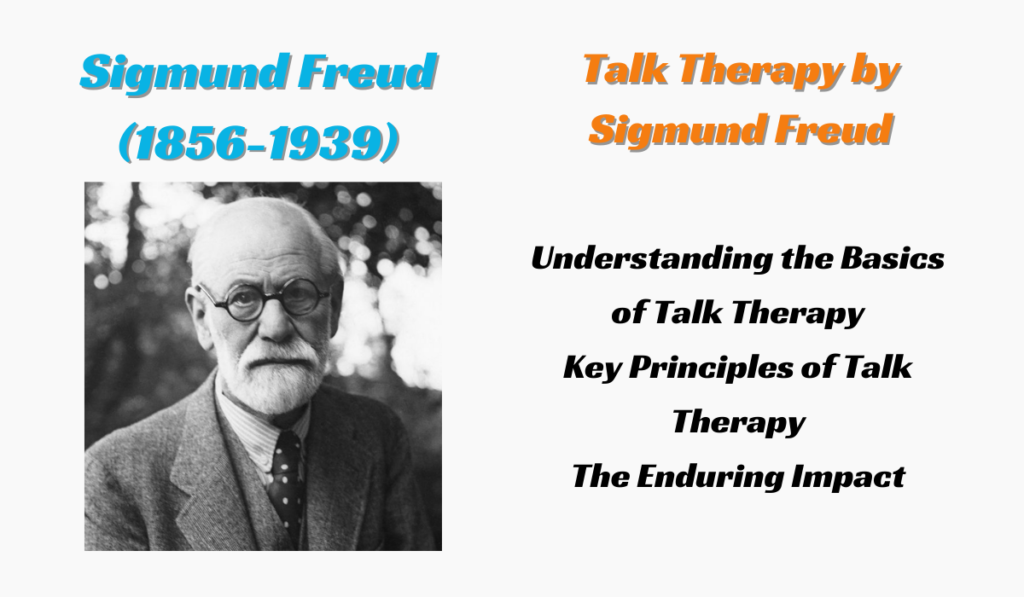
✅ Key Takeaways
- Cathexis refers to how the mind invests emotional energy (libido) into people, ideas, or objects.
- Anticathexis is the process of blocking or redirecting that energy to control unacceptable thoughts or urges.
- These two processes are central to Freud’s psychoanalytic model, which explains how personality is formed.
- The id generates desires and impulses, often through cathexis.
- The ego and superego use anticathexis to regulate those desires and keep behavior in check.
- Cathexis and anticathexis help explain emotional conflicts, self-control, and psychological defense mechanisms.
- Freud’s model also includes life and death instincts (Eros and Thanatos), which shape how emotional energy is used.
- A healthy mind maintains a balance between emotional investment (cathexis) and restraint (anticathexis).
Sigmund Freud explained that various factors play a crucial role in shaping an individual’s personality, including Cathexis and Anticathexis, life instincts, and death instincts.
Cathexis and Anticathexis
According to Freud’s psychoanalytic theory, the Cathexis and Anticathexis are the forces that control how the id, what Freud calls the first location of psychic energy, utilizes its energy. Cathexis refers to the id’s dispersal of energy while Anticathexis serves to block inappropriate uses of this energy. He further explain that the libido generates all psychological energy.
What is Cathexis?
Cathexis, derived from the Greek word “kathexis,” means to invest or occupy. In Freudian terms, it refers to the process by which mental energy is invested or attached to an object, idea, or desire.
The Process of Cathexis
When we encounter something that captures our attention or arouses our desires, our minds allocate a portion of psychic energy to that particular object or thought. This allocation of energy results in an emotional investment in the chosen focus.
Example of Cathexis:
Consider a person who develops a strong attachment to their smartphone. They may constantly check for notifications, spend hours browsing social media, and feel anxious when separated from their device. In this scenario, the smartphone becomes the object of cathexis, where the individual invests significant mental energy and emotion.
Significance of Cathexis
Cathexis is vital in understanding human behavior and emotions. It explains why particular objects or ideas are essential for individuals, shaping their thoughts and actions.
What is Anticathexis?
Anticathexis, on the other hand, is the process by which the mind inhibits or restrains the investment of psychic energy in specific desires or impulses that may be socially unacceptable or conflict with one’s values.
The Process of Anticathexis
When a desire or impulse arises that goes against societal norms or personal values, the mind employs anticathexis to suppress or block the allocation of psychic energy to that desire. This is done to prevent these unacceptable impulses from surfacing into consciousness.
Example of Anticathexis:
Imagine someone who experiences aggressive thoughts towards a colleague but consciously chooses not to act on them. In this case, anticathexis comes into play as the individual restrains the psychic energy that would have fueled those aggressive impulses.
Significance of Anticathexis
Anticathexis is a crucial mechanism for maintaining social harmony and personal morality. It allows individuals to navigate their desires and impulses in a way that aligns with societal norms and ethical standards.
Balancing Cathexis and Anticathexis
In Freud’s psychoanalytic theory, mental health and well-being are closely related to the proper balance between cathexis and anticathexis. A healthy individual effectively manages their psychic energy by investing it in socially acceptable desires and restraining it from socially unacceptable ones.
Conclusion
Freud’s concepts of Cathexis and Anticathexis provide valuable insights into the complex workings of the human mind. By understanding how we allocate and restrain our psychic energy, we can gain a deeper comprehension of our behaviors, emotions, and the choices we make in our daily lives. Balancing these processes is essential for maintaining mental equilibrium and harmonious coexistence with society.
FAQs
1. What is cathexis in Freudian psychology?
Cathexis is the process of directing emotional or mental energy (libido) toward a person, idea, or goal. It helps explain desires, passions, and emotional attachments.
2. What does anticathexis mean?
Anticathexis refers to the mental energy used by the ego or superego to suppress or block unwanted desires or thoughts from the id.
3. How do cathexis and anticathexis work together?
Cathexis pushes emotional energy toward a desire, while anticathexis works to control or stop it. This inner conflict shapes our behavior and emotional balance.
4. Why are cathexis and anticathexis important in Freud’s theory?
They show how mental energy flows in the mind, revealing how we deal with emotions, desires, and self-control in daily life.
5. What role do Eros and Thanatos play in this concept?
Eros (life instinct) often drives cathexis, while Thanatos (death instinct) can lead to destructive urges that anticathexis tries to control.
Bibliography
Cherry, Kendra. “How Freud Says Cathexis and Anticathexis Control Psychic Energy.” Verywell Mind, 12 Mar. 2020, www.verywellmind.com/cathexis-and-anticathexis-2795843.
McIntosh, Donald. “Cathexes and Their Objects in the Thought of Sigmund Freud.” Journal of the American Psychoanalytic Association, vol. 41, no. 3, Aug. 1993, pp. 679–709, https://doi.org/10.1177/000306519304100303. Accessed 11 Dec. 2022.
Mariam holds an MS in Sociology with a specialization in Medical Sociology and Social Psychology. With a strong academic background and extensive research work in both fields, she brings depth and clarity to complex topics. Her writing explores the intersection of society, health, and the human mind, making academic ideas easy to grasp and relevant to everyday life.



Pingback: Let’s find out some Famous Psychologists and their Theories - KnownPsychology
Pingback: Freud’s concept of Life Instincts and Death Instincts